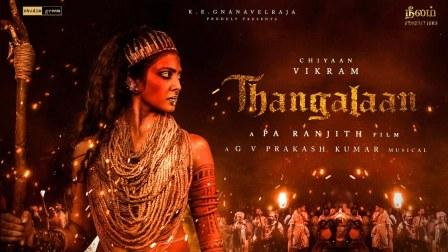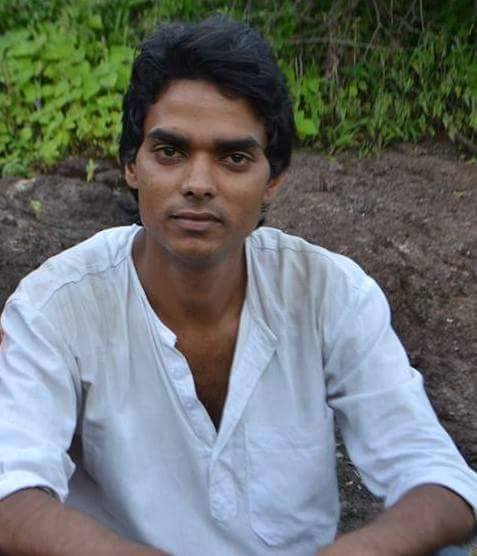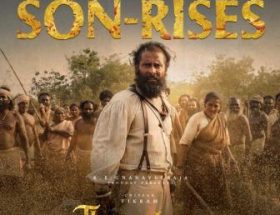Ibin Nayakam
On August 15, I watched the Tamil movie Thangalaan, directed by Pa Ranjith, and for the first time in a long while, I felt a sense of relief in my ideological struggle against societal injustices. Beyond its social commentary, the film offers extravagant visuals and employs magical realism to communicate its story. This genre, which blends magical elements into a realistic setting, creates a unique atmosphere where the boundary between reality and fantasy is blurred, allowing for a deeper exploration of themes such as identity, culture, and the nature of reality itself.
Beyond Expectations: A Different Kind of Thrill While the movie didn’t deliver the adrenaline rush I initially expected—those minute-to-minute high-energy scenes like instagram reels kind of sequences in typical blockbuster films—it exceeded my expectations in a different way. This movie director Pa Ranjith skillfully fuses important themes of empowerment for marginalized communities, particularly in the context of cultural and social capital.
Two Layers of Struggle The plot of Thangalaan operates on two levels. First, it explores the struggles of the people in the Kolar Gold Fields, who are exploited by powerful figures seeking to extract gold from their lands. Second, it travels into Thangalaan’s internal quest for identity and freedom, as he battles those who exploit and manipulate him.
The Plot : Set in the Veppur village of North Arcot around 1850 CE, the story follows a clan of tribals who, unable to withstand the greed of a wealthy landlord, send Thangalaan and a few others on a mission with a British general named Clement to find gold. Despite the dangers posed by Aarathi, a sorceress willing to spill blood to protect the land’s treasures, they embark on this perilous journey in the hope of a better future.
The acting in Thangalaan is commendable, from the lead roles to the supporting cast. The background scores also enhance the film’s impact. But here in this article, I would like to talk more about the scenes, symbols and ideology which gave me thrill as a socially deprived community guy and the cultural counters the director made through the scenes.
As a mass communication professional, I was particularly struck by a scene where a Brahmin man (representing the dominant caste) deliberately mistranslated a British official’s request for forgiveness, help, and support to the oppressed people, to which the protagonist Thangalaan belongs. The Brahmin falsely conveys that the British view the people as their slaves, intending to maintain the status quo of exploitation. Thangalaan intervenes, revealing the truth to his people and exposing the Brahmin’s deceit.
This scene is interesting to me for two reasons. First, it highlights the jealousy and hatred that dominant castes harbored towards oppressed communities when they gained social mobility, often aided by the British. Second, it challenges the notion that intelligence and language skills are exclusive to the educated elite. Thangalaan, a clever villager, though illiterate, understood English through his close association with the British during the gold search—a concept known as “learning by association.”
Another striking moment occurs when Thangalaan, previously seen only in a loincloth, returns on horseback, armed and dressed in British attire, to repay a debt to a greedy landlord and free his family from bondage.
The Symbolism of Buddha Statues and Their Replacement in Hindu Temples
In Thangalaan, the fantasy world of Arati presents a striking moment when a Brahmin teenager advises the king to destroy a Buddha statue to claim the region’s gold. This scene serves as a symbolic representation of how Brahminism gradually replaced the varna system by assimilating Buddhist ideas into their own religious practices. This phenomenon is evident in several instances across India, where Hindu gods have been depicted in ways that closely resemble Buddha statues, thereby integrating Buddhist symbols into Hindu worship.
One prominent example is the Ayyappa statue in Kerala, which bears a remarkable resemblance to Buddha statues. The Ayyappa temple, situated atop a hill akin to Buddhist viharas, which were traditionally built on elevated grounds for meditation purposes, further underscores this connection. Historians and scholars have noted that many Hindu temples, particularly in South India, were built on former Buddhist sites. This strategic replacement served to assert Brahminical dominance over the region and its people, effectively subsuming Buddhist influence under the guise of Hindu deities.
The process of replacing Buddha statues with Hindu gods can be traced back to the decline of Buddhism in India, particularly after the 8th century. As Buddhism’s influence waned due to various socio-political factors, including the rise of Brahminical Hinduism and the patronage of Hindu rulers, many Buddhist sites and icons were appropriated. For example, the famous Jagannath Temple in Puri is believed by some historians to have originally been a Buddhist site, with the deity Jagannath potentially being a reinterpreted form of Buddha.
This absorption and transformation of Buddhist symbols into Hinduism not only allowed Brahminism to reassert its authority but also to adapt and survive by incorporating and rebranding the spiritual elements of Buddhism. The portrayal of such a transformation in Thangalaan reflects this historical reality, where the destruction of the Buddha statue symbolizes the erasure of Buddhist influence and the consolidation of Brahminical power.
Challenging the Savior Complex in Cinema
In many films, whether it’s James Cameron’s Avatar or the recent Tamil movie Jigarthanda, the savior of indigenous people is often portrayed as an outsider. As someone from an indigenous fishermen community, I find this trope deeply troubling. I reject the notion that heroes must come from outside our communities, a narrative that’s prevalent in media worldwide. Often, it’s the white superhero who saves Black lives, the wealthy who uplift the poor, or the upper caste who “charitably” rescues oppressed communities. However, in Thangalaan, director Pa Ranjith challenges this dominant narrative. Thangalaan, the protagonist, is a family man from within the indigenous community. Constantly exploited by both landlords and the British, he struggles to retain his land and his freedom. Ultimately, it’s through his own relentless search for freedom that he empowers his clan, defying the expectation that salvation must come from an external force.
Strong Women: Arati and Gangamma’s Impact
The film features two prominent female characters: the mystical witch Arati and Thangalaan’s wife, Gangamma. In a memorable scene, Thangalaan returns home after confronting the landlord, carrying money and clothes given to him by the British to repay his debts and reclaim his land. The entire village, which had suffered under the same landlord’s exploitation, watches in awe as Thangalaan stands up to the oppressor. In this moment, he becomes a hero to them. Upon returning home, Thangalaan asks Gangamma to serve sweets to the villagers. However, Gangamma, with a sharp look, playfully retorts, “Why don’t you serve them yourself?” This humorous exchange highlights the equal footing she shares with her husband. Thangalaan then goes inside and personally serves the sweets to the villagers gathered at his home.
This scene resonates with me because, in my village and other indigenous fishermen communities, women like my mother hold significant influence within the family. This dynamic is common among my friends’ families as well, where women’s voices are strong and respected.
Arati’s character, on the other hand, crafted through magical realism, represents the powerful goddess of the forest, fiercely guarding the region’s treasures. Her role reflects the real-life strength of women in indigenous and marginalized communities, especially during land disputes involving the government or powerful corporations. When women from these communities join protests, their involvement often intensifies the movement. I witnessed this firsthand when the fishermen community in Trivandrum protested against the Adani sea port in Kerala. The participation of women from my community significantly strengthened the protest, even leading to the temporary closure of the Kerala Secretariat. Director Pa Ranjith’s focus on Arati, who stands against Thangalaan, the king, and the British, highlights the essential role women play in resisting oppression and defending their communities.
Conclusion: A Film of Counter-Culture Thangalaan, like other films by Pa Ranjith, serves as a powerful counter-culture response to the deeply entrenched casteism, patriarchy, and class inequality in Indian society. As a mass communication professional from an indigenous fishermen community, I felt a profound sense of empowerment watching this film. The themes of exploitation, oppression, and the fight for dignity resonated deeply with me and my community. Until our society achieves true equality, films like Thangalaan will remain relevant, offering both a critique and a source of hope for the future.
~~~
Ibin Nayakam is a first generation graduate from a coastal fishing community in Kerala. He completed his Masters in Mass Communication from Central University of Jammu (2022) and worked at regional online newspapers and coastal community radio for two years (2019-2021).










